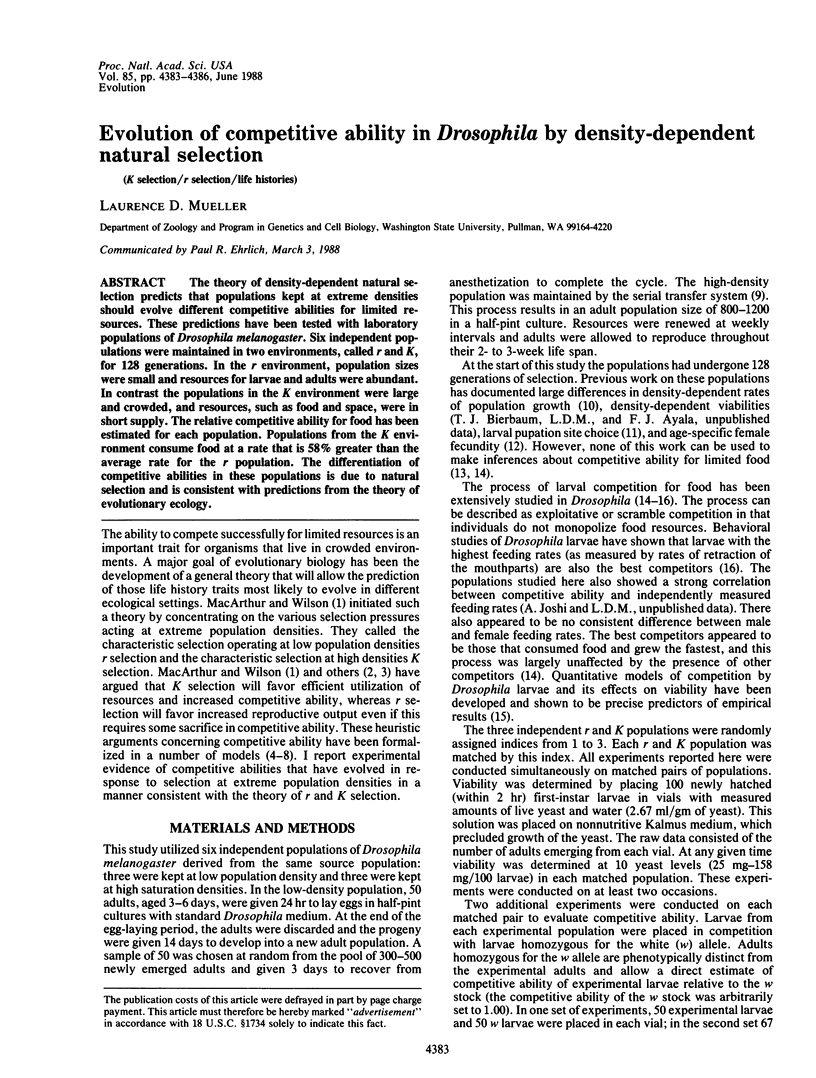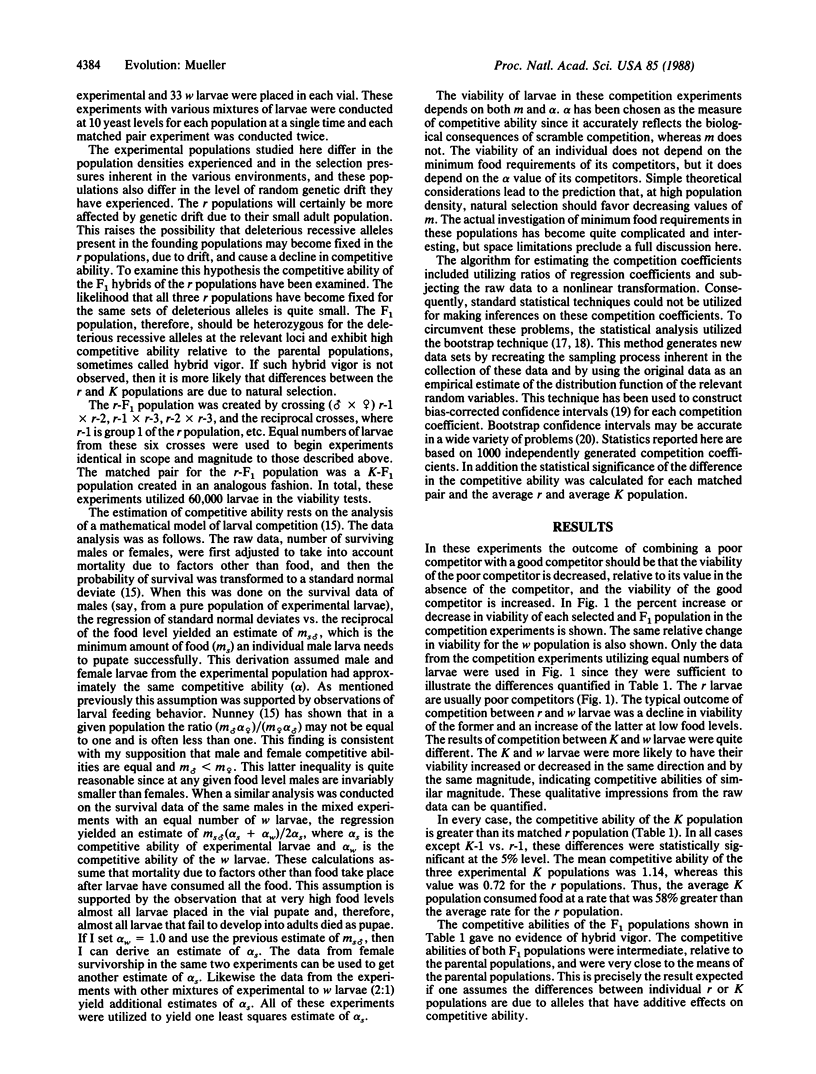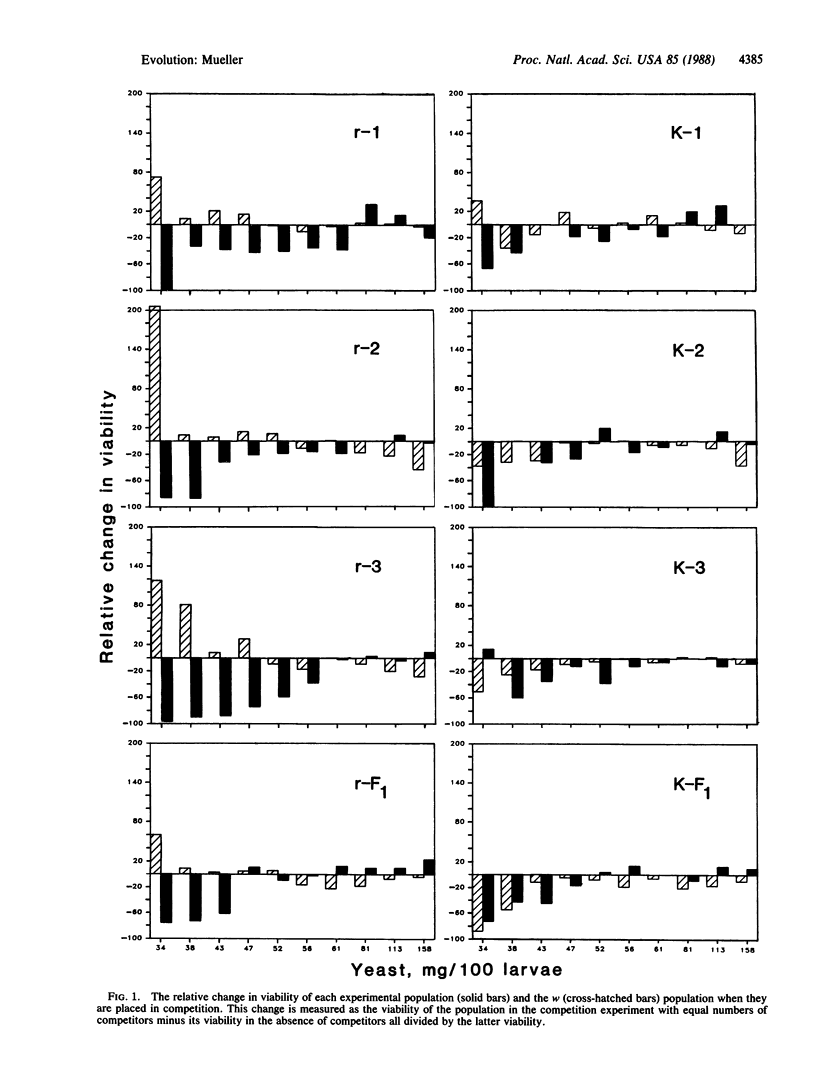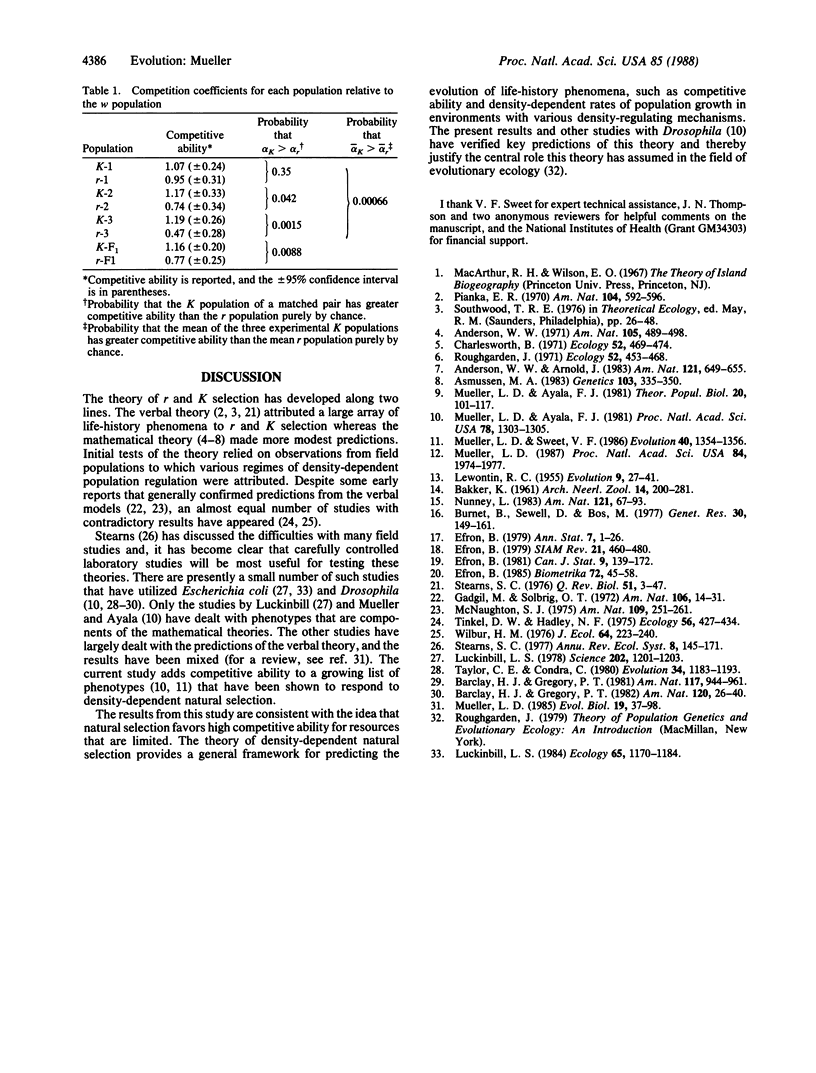Abstract
The theory of density-dependent natural selection predicts that populations kept at extreme densities should evolve different competitive abilities for limited resources. These predictions have been tested with laboratory populations of Drosophila melanogaster. Six independent populations were maintained in two environments, called r and K, for 128 generations. In the r environment, population sizes were small and resources for larvae and adults were abundant. In contrast the populations in the K environment were large and crowded, and resources, such as food and space, were in short supply. The relative competitive ability for food has been estimated for each population. Populations from the K environment consume food at a rate that is 58% greater than the average rate for the r population. The differentiation of competitive abilities in these populations is due to natural selection and is consistent with predictions from the theory of evolutionary ecology.
Full text
PDF



Selected References
These references are in PubMed. This may not be the complete list of references from this article.
- Asmussen M. A. Density-dependent selection incorporating intraspecific competition. II. A diploid model. Genetics. 1983 Feb;103(2):335–350. doi: 10.1093/genetics/103.2.335. [DOI] [PMC free article] [PubMed] [Google Scholar]
- Luckinbill L. S. r and K Selection in Experimental Populations of Escherichia coli. Science. 1978 Dec 15;202(4373):1201–1203. doi: 10.1126/science.202.4373.1201. [DOI] [PubMed] [Google Scholar]
- Mueller L. D., Ayala F. J. Trade-off between r-selection and K-selection in Drosophila populations. Proc Natl Acad Sci U S A. 1981 Feb;78(2):1303–1305. doi: 10.1073/pnas.78.2.1303. [DOI] [PMC free article] [PubMed] [Google Scholar]
- Mueller L. D. Evolution of accelerated senescence in laboratory populations of Drosophila. Proc Natl Acad Sci U S A. 1987 Apr;84(7):1974–1977. doi: 10.1073/pnas.84.7.1974. [DOI] [PMC free article] [PubMed] [Google Scholar]
- Stearns S. C. Life-history tactics: a review of the ideas. Q Rev Biol. 1976 Mar;51(1):3–47. doi: 10.1086/409052. [DOI] [PubMed] [Google Scholar]


